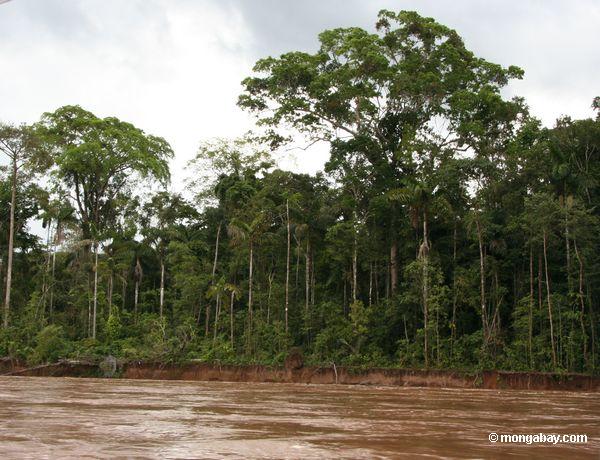Reader Contribution: The ‘One Tree In A Billion’ Project
With recent surveys showing the rate of deforestation in the Amazon averaging 2,000 square miles each year, we are at a time where conservation of the rainforest is becoming more and more critical. Threats like logging and illegal gold mining are becoming more prominent, particularly in the Peruvian Amazon, where mercury used in gold mining devastates habitat and pollutes waterway, threatening fauna and local communities. Mercury is used to amalgamate particles of gold, and is then burned off afterwards leaving the nugget of gold intact underneath, but excess mercury forms pits, intermittently staining the rainforest landscape.
Madre de Dios in southeastern Peru is contaminated with approximately 30 to 40 tonnes of mercury each year, and now 78% of Madre de Dios residents have dangerously high levels of mercury in their bodies.
According to the Amazon Conservation Association (ACA) in 2010 gold miners felled over 370,000 acres of forest to make room for illegal mines (with 50% of these being small, informal set ups) and since then it is predicted that these numbers have soared.
It’s hard when presented with numbers like 370,000 acres or 2,000 square miles to visualize the extent of the damage, as our brains can’t understand the complexity of the very large, or the very small. The “One Tree In A Billion” project based in Tambopata, Peru, unlike most other rainforest studies, is focusing on a single fig tree and documenting all of the species this single tree can support over a 60-day period, to show what we lose each time a tree is felled. Being carried out by three wildlife photographers and endorsed by WLT, the project will use camera trapping, macro-photography and infrared to compile a visual catalog of the life in the area.
Birds, mammals, reptiles, amphibians and invertebrates will all be documented, using a wide array of techniques and equipment. Birds will be photographed from hides for the most part, but mist nets will also be set up around the subject tree to temporarily capture any birds, enabling the team to photograph them before their release. These mist nets will be kept open during the night, to capture any bats that may inhabit or travel around the fig tree. Infrared cameras and non-lethal traps will be used to document mammal species, whilst non-lethal malaise traps will capture flying insects. Insects and invertebrates that may be too small to identify with the naked eye will be photographed through a light microscope. Pitfall traps will be set up in various areas around the diameter of the tree, to temporarily capture reptiles and amphibians, while headlamps are to be used at night to detect the glowing eye-shine of the many frog species found in the rainforest.
The photographs will be used to make a field guide, to aid local research scientists and local conservation groups, as well as being part of an interactive roadshow in the UK, to educate children on the importance of the protection of this diverse landscape. The project is being covered by Photography Monthly Magazine amongst others, with the hope that radio and TV productions will pick up the story, and convey the importance of the conservation of the Amazon to a wider audience.
All of the equipment, construction of hides, and transportation is costly, so the team have started a kickstarter page offering the chance to become a backer, and be involved in the project.


